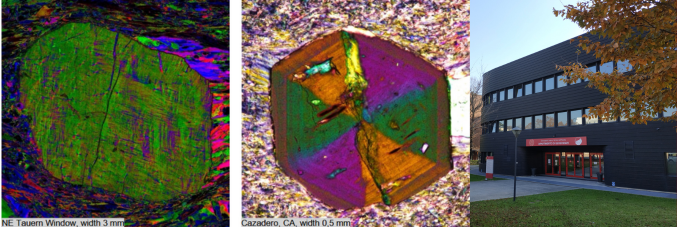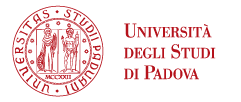
Garnet: not quite as cubic as one might think
Speaker: Prof. Bernardo Cesare - Department of Geosciences | Thursday 2 October 2025 | 4,30 p.m. Arduino Classroom
02.10.2025
Since the first report in 2019 on the tetragonal structure of common garnet in low-T metamorphic rocks, many new occurrences have been discovered, including blueschists from the Franciscan Complex, Syros and Aosta Valley, and phyllites from the iconic Barrow garnet zone of Scotland and from the Alps. These garnets share compositional features such as grossular >20% and pyrope <7%, which are common in both metabasites and metapelites metamorphosed at T < ≈500-550 °C.
The non-isotropic nature of the garnets determines a very weak birefringence, which is generally overlooked, yet it can be easily detected by polychromatic polarization microscopy, and by Raman microspectroscopy. Optically, the birefringence pattern suggests the presence of twelve growth sectors (twins) arranged in a dodecahedron, having optical axes swapped by 90°.
Single-crystal XRD and HRTEM investigations have demonstrated that these anisotropic garnets have a pseudocubic tetragonal or orthorhombic structure with a minimal (≈ 1/1000) difference between the a, b and c axes. Due to the minimal departure from the cubic cell, conventional EBSD orientation analysis could not discriminate the orthogonal orientation of <c> axes in the optically different sectors, requiring further TEM characterization.
This presentation will report the state-of-the-art about non-cubic common garnets, discuss some new results and describe the new research avenues, suggesting that the anisotropy of garnet in low-T metamorphic rocks may be the rule rather than the exception.





